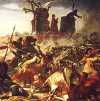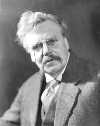 In his observations of World War I veterans, Sigmund Freud noticed that the men had a strange proclivity toward reenacting traumatic experiences. He also observed this tendency in young children who often play games that simulate unpleasant situations. To explain this, he introduced and later developed the concept of the death drive: a primitive impulse for destruction, decay, and death, manifested by a turning away from pleasure. What Freudian principle does the death drive violate? Discuss
In his observations of World War I veterans, Sigmund Freud noticed that the men had a strange proclivity toward reenacting traumatic experiences. He also observed this tendency in young children who often play games that simulate unpleasant situations. To explain this, he introduced and later developed the concept of the death drive: a primitive impulse for destruction, decay, and death, manifested by a turning away from pleasure. What Freudian principle does the death drive violate? Discuss
Source: The Free Dictionary
 In 1160, Holy Roman Emperor Frederick I Barbarossa was excommunicated for his support of a series of antipopes against Pope Alexander III. In 1167, the communes of Lombardy in northern Italy formed an alliance to resist Frederick. The Lombard League soundly defeated Frederick’s forces in the Battle of Legnano, after which Frederick reconciled with the pope and made peace with the Lombard cities. Why, if he survived, did Frederick’s wife go into mourning for her husband following the battle?
In 1160, Holy Roman Emperor Frederick I Barbarossa was excommunicated for his support of a series of antipopes against Pope Alexander III. In 1167, the communes of Lombardy in northern Italy formed an alliance to resist Frederick. The Lombard League soundly defeated Frederick’s forces in the Battle of Legnano, after which Frederick reconciled with the pope and made peace with the Lombard cities. Why, if he survived, did Frederick’s wife go into mourning for her husband following the battle?  The Coca-Cola 600 is the longest race of the four big races of the
The Coca-Cola 600 is the longest race of the four big races of the  A British man of letters, Chesterton was a journalist, scholar, novelist, short-story writer, and poet. He wrote essays on Christianity and works of social and literary criticism on subjects such as Charles Dickens. His fiction includes the popular allegorical novel The Man Who Was Thursday, and his most successful creation, the series of detective novels featuring the priest-sleuth Father Brown. Chesterton was also known for collaborating with what author?
A British man of letters, Chesterton was a journalist, scholar, novelist, short-story writer, and poet. He wrote essays on Christianity and works of social and literary criticism on subjects such as Charles Dickens. His fiction includes the popular allegorical novel The Man Who Was Thursday, and his most successful creation, the series of detective novels featuring the priest-sleuth Father Brown. Chesterton was also known for collaborating with what author?  The use of the fork is a basic concern of Western table etiquette. The utensil’s origin is disputed; certain passages in the book of I Samuel suggest that forks were used during priestly sacrifice, and it is commonly accepted that the Greeks used serving forks long before the Middle Ages. Before the fork made its 10th century debut at tables across Europe, people commonly used their hands to eat. Why did the Roman Catholic Church initially consider the use of a fork an insult to God?
The use of the fork is a basic concern of Western table etiquette. The utensil’s origin is disputed; certain passages in the book of I Samuel suggest that forks were used during priestly sacrifice, and it is commonly accepted that the Greeks used serving forks long before the Middle Ages. Before the fork made its 10th century debut at tables across Europe, people commonly used their hands to eat. Why did the Roman Catholic Church initially consider the use of a fork an insult to God? _-_The_Last_Supper_(1495-1498).jpg) By the 1970s, Leonardo da Vinci’s 15th-century mural masterpiece, The Last Supper, was badly deteriorated. Italian officials then undertook a major restoration project to permanently stabilize the painting and reverse the damage. The painting’s original form was determined using original sketches and scientific tests, including infrared reflectoscopy and microscopic core-samples. The restoration took 21 years, and the painting was put back on display in 1999. Where is it located?
By the 1970s, Leonardo da Vinci’s 15th-century mural masterpiece, The Last Supper, was badly deteriorated. Italian officials then undertook a major restoration project to permanently stabilize the painting and reverse the damage. The painting’s original form was determined using original sketches and scientific tests, including infrared reflectoscopy and microscopic core-samples. The restoration took 21 years, and the painting was put back on display in 1999. Where is it located?